Jam and marmalade might sound like they’re one in the same, but don’t be fooled – there are actually some pretty significant differences between these two popular spreads.
For years, debates have been had over which is superior: jam or marmalade?
Depending on your own particular taste buds and preferences, either could rank as the victor in this fruit-filled faceoff.
So what exactly distinguishes them from each other?
Join us as we set out to explore the nuances that make jam and marmalade different culinary creations—and determine once and for all who comes out on top.

What is Jam?
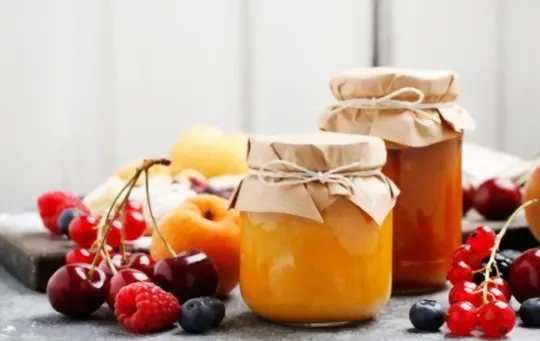
Jam is a delectable spread that has been enjoyed by people worldwide for centuries.
At its core, jam is made from cooked fruits mixed with sugar and pectin, a natural substance found in various fruits that helps the jam set.
The fruit is cooked down until it becomes soft and smooth, and then sugar is added to enhance the flavor and act as a preservative.
As the mixture simmers, pectin is added to create a thick and smooth texture.
The result is a sweet and flavorful spread that can be used on toast, biscuits, or as a filling for desserts.
While the process of making jam can be time-consuming and delicate, the end result is worth the effort.
Adding a dollop of jam to your breakfast or snack not only adds a punch of flavor but also a touch of homemade goodness.
What is Marmalade?
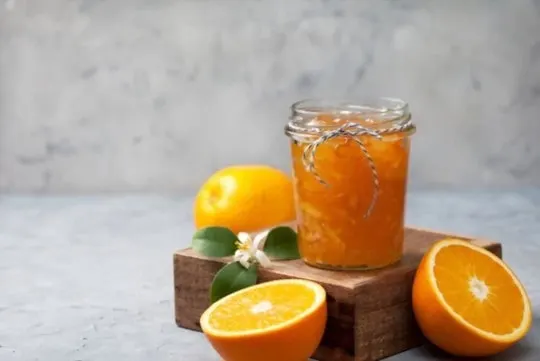
Marmalade is a rich and tangy spread that is a favorite of many across the globe.
It is made by boiling citrus fruits, such as oranges or lemons, with sugar and water until it forms a thick and delicious mixture.
To make the perfect marmalade, one must use the right amount of fruit, sugar, and water, and must watch and stir the mixture carefully to prevent it from sticking to the pot or burning.
Marmalade is a versatile condiment that can be used on toast, biscuits, scones, or even as a glaze for meats such as ham or chicken.
It is also packed with vitamin C and antioxidants, which make it a healthy choice for breakfast or snack time.
Whether enjoyed on a lazy Sunday morning or as a midday treat, marmalade is sure to delight your taste buds with its unique and zesty flavor.
Differences Between Jam and Marmalade
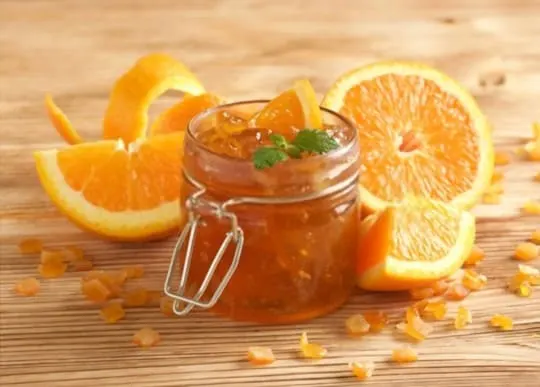
Jam and marmalade are popular spreads that people often use on toast, bread, or pastries.
The main difference between the two is the composition of their ingredients.
While jam is made with whole fruit or pieces of fruit that have been pureed, marmalade is made with citrus fruits that have been boiled until they’re soft.
Afterward, the pulp and rind are mixed together to create a bittersweet spread.
Both spreads may contain sugar and pectin to give them a jelly-like consistency.
Ingredients Used
When it comes to ‘What’s Inside?’, essential and dissimilar components go into making both jam and marmalade.
The key ingredient of jam is fruit, sugar, and pectin.
Alternatively, the traditional ingredients for marmalade are citrus fruit slices, sugar, and water; essential fruits contain a high concentration of pectin.
Jam usually features whole or cut-up pieces of fruit suspended in the gel-like substance created by pectin.
Other ingredients may also be added to enhance flavor, including cinnamon or vanilla extract.
Marmalade is characterized by its fine shreds of citrus peel dispersed throughout the preserve.
Notably, some marmalades include whiskey or other alcoholic beverages during or after cooking to enhance the flavor.
Ultimately, these differences come down to preference as both jams and marmalades offer their unique texture and taste profile that pairs well with different food recipes.
Fruit Texture and Appearance
The quality of fruit used in making jam and marmalade distinguishes their texture and appearance.
Jam is made by grinding fruits into a puree, so it has a smoother texture with finer bits of fruit.
Marmalade, on the other hand, contains chunkier pieces or shreds of citrus fruit peel, creating a coarser texture.
Additionally, the use of pectin in making jam gives it a thicker consistency compared to the thinner marmalade.
Overall, the difference in fruit texture and appearance affects the overall taste and experience of these spreads.
Flavor and Taste
This particular variation of the heading ‘Flavor and Taste’ refers to the distinctiveness of flavors in Jam and Marmalade.
Whereas both are made from fruit, their difference in texture gives rise to different taste buds.
While Jam has a smooth consistency, Marmalade contains thick pieces of citrus fruit rind.
The smoother Jam melts in the mouth and bombards the tongue with varying sweetness that is pleasing to some yet uninteresting to others.
However, the thick-cut bitterness from Marmalade’s chunky peel keeps you wanting more as it dissolves slowly in your mouth.
Thus, it all boils down to personal preference.
Cooking Method
The optimal way of preparing fruit jams and marmalades is critical for the tastes of both spreads.
For achieving the desired texture, flavor, and consistency, cooking techniques are essential.
Precise heat control and timing result in a smooth spread that has the right balance of thickness and sweetness.
Jams are created by cooking whole fruit while adding sugar, water, acid, and pectin to achieve a consistent blend.
On the other hand, Marmalades use citrus fruits such as oranges or lemons with peel cut into pieces boiled in water before being combined with sugar.
It results in a clear jelly-like texture studded with citrus pieces.
When meticulously crafting these spreads at home, one can experiment using different seasonings and methods like oven baking or water bath canning to make it shelf-stable for long periods.
Uses in Cooking and Pairings
Jam and Marmalade have various uses in the culinary world as they are toppings for bread, crackers, toast and pastries, and can be utilized in multiple cooking recipes.
These spreads come in different flavors such as fruit and occasionally sweetened with sugar or honey.
Moreover, Jam is more frequently used as a spread for daily breakfasts, whereas Marmalade is commonly reserved for special occasions due to its bitterness.
Jam is a perfect addition to cakes, pies and cookies while giving a fun twist to cocktails by adding sweetness to drinks.
Likewise, Marmalade can be blended into marinades or barbecue sauce that gives meat dishes an added tangy flavor.
One unique aspect of these spreads is their versatility in pairings with cheeses like gouda, brie, goat cheese which elevates their taste.
Additionally, Jams make an ideal accompaniment while serving fries or roasted meats by acting as dipping sauces.
Further light innovativeness could introduce ways to mix jams or marmalades into glazes for chicken wings which will entice visitors at events.
Similarities Between Jam and Marmalade
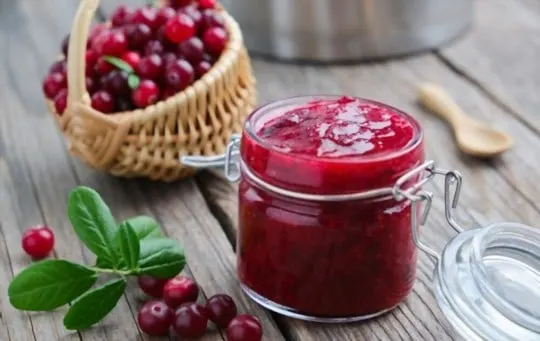
Jam and Marmalade are quite similar in many ways.
Both are made by boiling fruits with sugar but differ slightly in terms of ingredients and the cooking process.
They are both spreads used for toast, bread, scones or as fillings in cakes or pastries.
Both jam and marmalade come in a variety of flavors from fruit blends to unique mixtures like ginger marmalade or apricot jam.
Although they may have different consistencies, they share similarities in their sweetness level and serving usages.
When it comes to differences between these two delicious spreads, one of the main distinctions is that marmalade is made specifically from citrus fruits such as oranges, lemons, limes or grapefruit while jam can be made with various kinds of berries, peaches, pears, etc.
Additionally, jam typically has chunks of fruit whereas marmalade has smaller shreds of citrus peel mixed throughout.
Another crucial difference is that marmalade contains an element of bitterness due to its inclusion of the rind which does not present itself in most jams.
It’s essential to understand the minute differences between Jam and Marmalade before choosing either option as different recipes will require each variation’s attributes.
In summary, both Jam and Marmalade offer exciting variations for all fruit lovers out there.
Which is Healthier: Jam or Marmalade?
When it comes to healthier options between Jam and Marmalade, the latter one emerges as a better pick.
Marmalade contains more natural fruit acids, making it healthier for those looking for a lesser sweet spread alternative.
Despite the additional sugar in Jam, low sugar options are available, which are equally nutritious and entirely devoid of any artificial preservatives.
In terms of calorie count, Marmalade proves to be a better deal than Jam with only 50 kcal per 20-gram serving size.
Comparatively, jam contains almost double calories with 115 kcal per serving size, mostly due to high sugar content.
While both options have their uniqueness in taste and texture, people preferring a low-calorie lifestyle can choose marmalade without any second thought.
Apart from being lower in calories and containing more natural fruit acids, marmalade provides high levels of Vitamin C that strengthens the immune system by fighting off infections and reducing cell damage.
With its smooth yet tangy taste, marmalade also works well as a bread spread or accompaniment to cheese boards or yogurt bowls without adding unnecessary harm to your health.
Where to Buy Jam and Marmalade and How to Store Them?
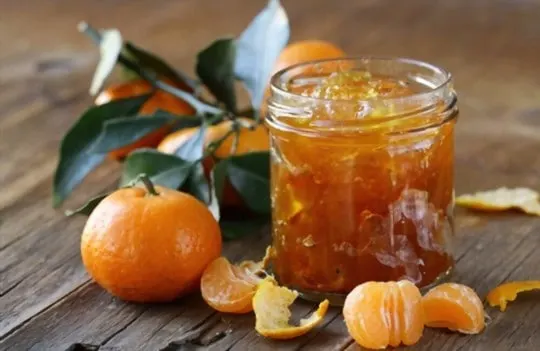
If you’re looking to buy Jam or Marmalade and want to know how to properly store them, this article has got you covered.
Here are some helpful tips to guide your purchases and storage decisions.
Visit nearby grocery stores or markets for a wide range of options of marmalades and jams.
Ensure that the packaging is sealed and check for any expiry dates before making a purchase.
Keep opened jars of Jam and Marmalade refrigerated in order to preserve quality, texture, and taste which prolongs their shelf life; unopened ones can be stored on shelves or room temperature cupboards.
To maintain freshness, always use clean utensils while scooping out servings from the jars without using wet fingers as it might lead to bacterial growth.
For longer preservation, consider freezing the product in small portions.
Jam is made by boiling fruits until they are soft enough to form a spreadable gel, whereas marmalade uses fruit peels along with pulp or juice.
Common variations in flavors include strawberry jam, orange marmalade, apricot jam etc.
- Procuring Jam and Marmalade.
- Storage.
- Preservation.
- Varieties.
It’s important to note that anytime you refrigerate Jam or Marmalade it will cause crystallization, which is natural but doesn’t affect the quality.
Follow these guidelines to ensure that you have access to delicious spreads long after purchasing them.
Conclusion
After a thorough exploration of the differences between jam and marmalade, it’s safe to say that we can all agree that if you want something sweet with a bit of tanginess, then give either one a try.
For the sophisticated palate, marmalade may be your preferred choice because it includes the added citrusy delight.
If you’re in search of a sweeter favorite with an added hint of tartness, then jam may offer just the right balance of flavors for your taste buds.
Both choices provide some unique benefits and each one brings something unique to the table.
With both jam and marmalade, there are many varieties available so it’s easy to give each one a try and discover what suits your specific preferences best.
Ultimately, whatever you choose will be delicious and leave you satisfied.
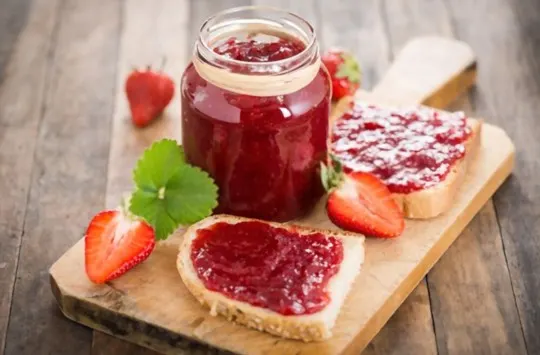
Jam vs Marmalade: Which is a Better Option?
Ingredients
- Jam
- Marmalade
Instructions
- Choose between two items based on your preference and availability.
- Follow the cooking directions for your chosen option, using the appropriate ratio of ingredients.
- Prepare it according to your desired recipes.
- Incorporate them into your dish, adjusting the amount to suit your taste.
- Enjoy the unique taste experience and experiment with different dishes to explore their versatility.

Andrew Gray is a seasoned food writer and blogger with a wealth of experience in the restaurant and catering industries. With a passion for all things delicious, Andrew has honed his culinary expertise through his work as a personal chef and caterer.
His love for food led him to venture into food writing, where he has contributed to various online publications, sharing his knowledge and insights on the culinary world. As the proud owner of AmericasRestaurant.com, Andrew covers a wide range of topics, including recipes, restaurant reviews, product recommendations, and culinary tips.
Through his website, he aims to inspire and educate fellow food enthusiasts, offering a comprehensive resource for all things food-related.
